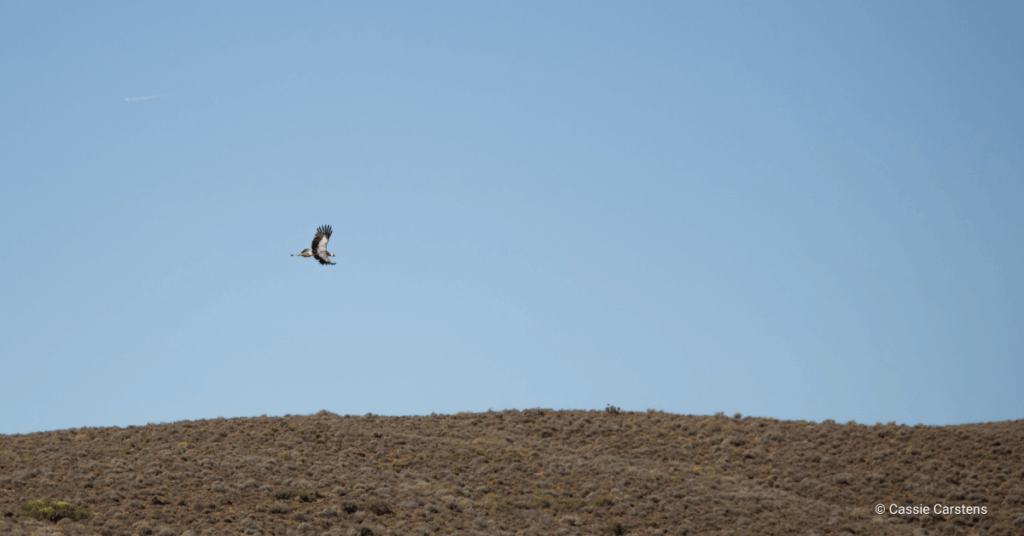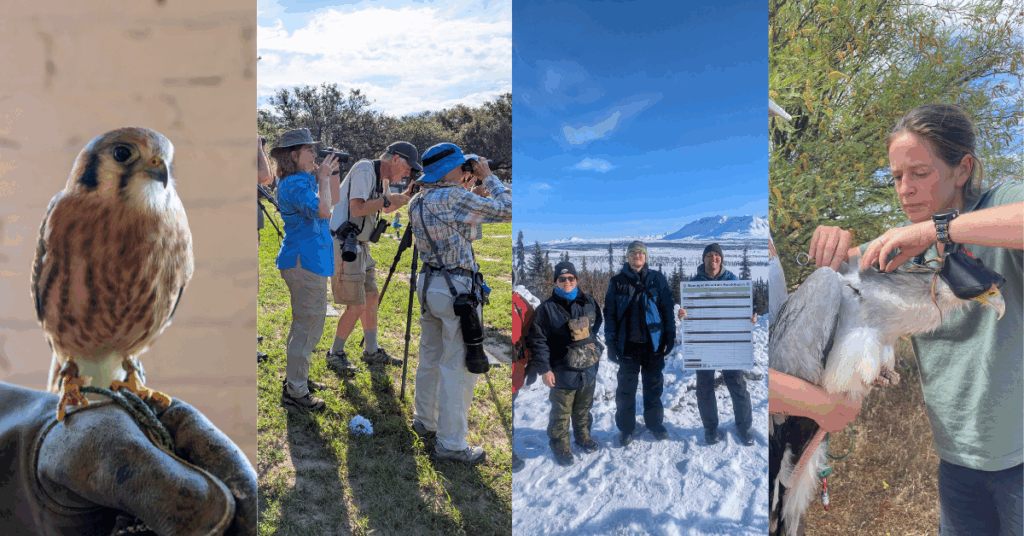While you likely know that HawkWatch International (HWI) has been placing silver aluminum bands on raptors for over 35 years to study raptor movement ecology and survival, have you ever heard of color bands? Color bands are sometimes placed on birds in addition to traditional bands and generally contain larger and fewer letters or numbers, in the hopes that humans or cameras will “capture” a good read of the band without having to capture the actual bird! Color bands, then, are a potential middle ground between expensive, potentially intrusive tracking devices that provide a wealth of data, and traditional aluminum bands that generally only provide data when a bird is captured or found dead, both of which are extremely uncommon.
HWI and partners Dugway Proving Ground, Hill Air Force Base, and local eagle banding legend Kent Keller, have been placing color bands on nestling Golden Eagles in Utah’s West Desert since 2017. The partners have a shared interest in monitoring the West Desert eagle population. To date, nearly 250 color bands have been deployed, but based on annual post-fledge survival rates, we suspect about half as many birds are free flying with color bands today. As we approached a critical mass with color band deployments, we’ve also begun ramping up efforts to “resight” color bands on live birds with motion-sensitive cameras. This past winter, we placed roadkill deer near cameras at 10 sites in the West Desert and captured 8 color banded eagles in photos! One exciting tale that is worth recounting is the nearly 5-year long story of “DH”.
DH was banded as a 7.5-week old, 7.3-lbs male Golden Eagle nestling on May 24, 2017, at a cliff nest on Dugway Proving Ground. (Interestingly, his sibling received a transmitter that “died” in early March, 2021, so the color band has given us longer-term data, but fewer points!).
Long-time eagle bander, Kent Keller, was able to photograph DH over a year later on June 1, 2018, on a fence post about 6 miles north of Dugway. The full crop suggested he wasn’t going hungry out there!
For a few years, DH went off the radar, so to speak. Then, when we placed roadkill deer near cameras at 10 sites in the West Desert this past winter, DH was seen feeding at one of them on February 4, 2022, about 60 miles north of the nest where he was born.
DH showed up again just a few weeks later (February 19, 2022) on a nest monitored with a camera on Dugway Proving Ground, about 19 miles from where he was hatched! It’s worth noting that DH is considered an adult at this point, and appears to be prospecting potential future nest sites.
DH was seen once more on this nest on March 20, 2022, this time alone, and the nest was also visited by other unbanded eagles this past spring. It will be interesting to see if DH pairs up and gives fatherhood a try next year. We also plan to place more roadkill deer and cameras this coming winter, and we are reaching out to partners that have cameras at water features in the desert to glean even more color band resightings. Heres to hoping we see more of DH in the future!
Want to get involved in our Golden Eagle work? Keep your eyes peeled for color banded Golden Eagles! We are now accepting sightings on our website. You can report Golden Eagle color bands here: https://hawkwatch.org/report-a-banded-bird/eaglebands/
This blog was written by Steve Slater, HWI’s Conservation Science Director. You can learn more about Steve here.



